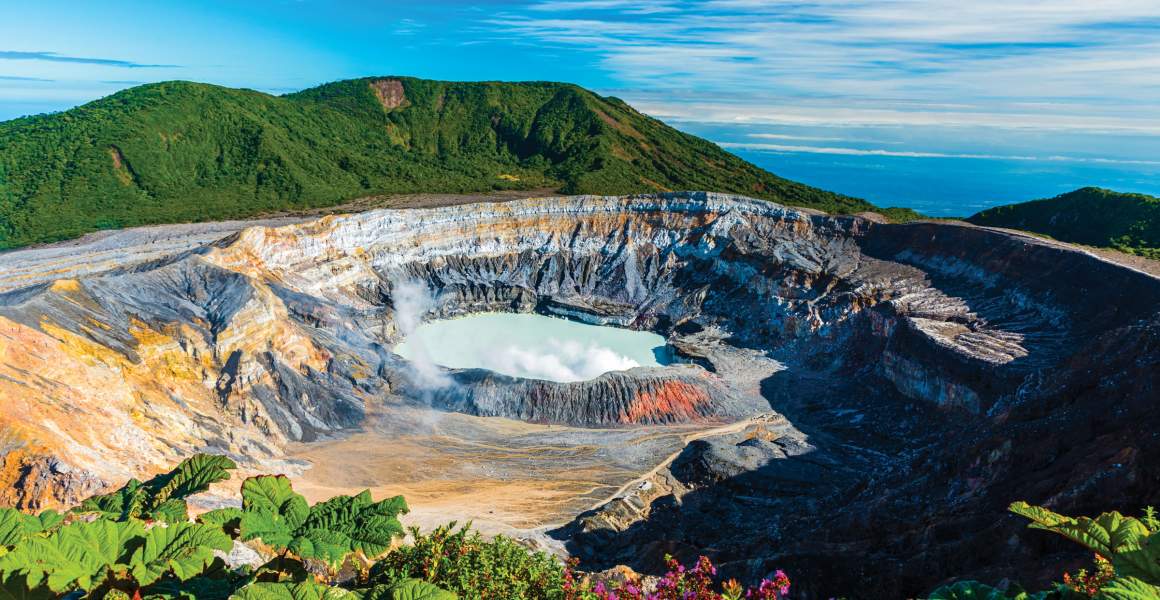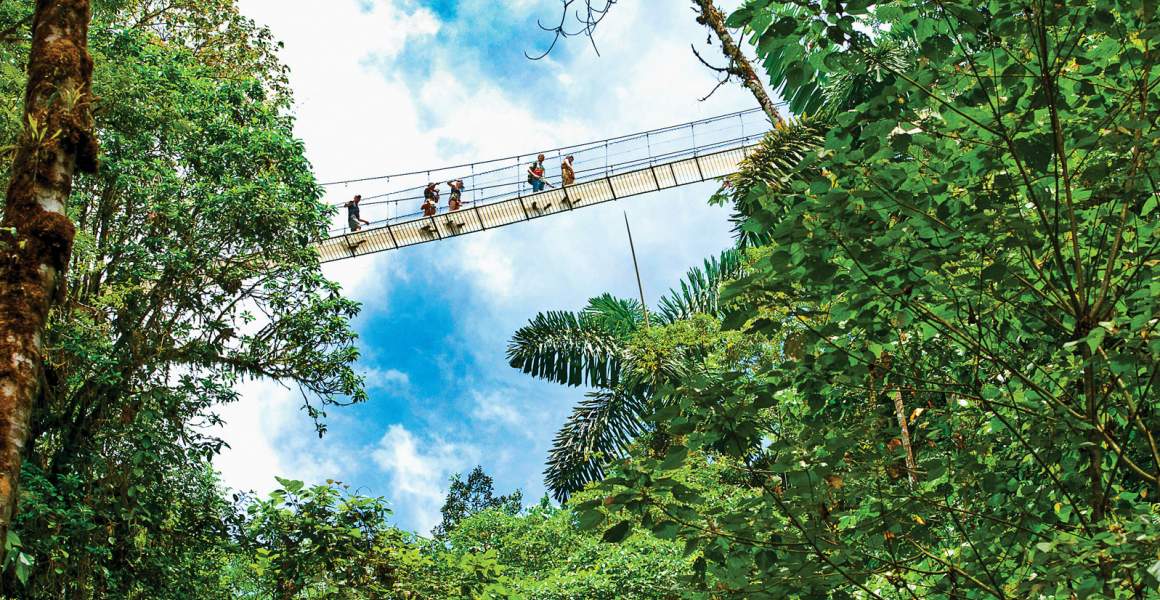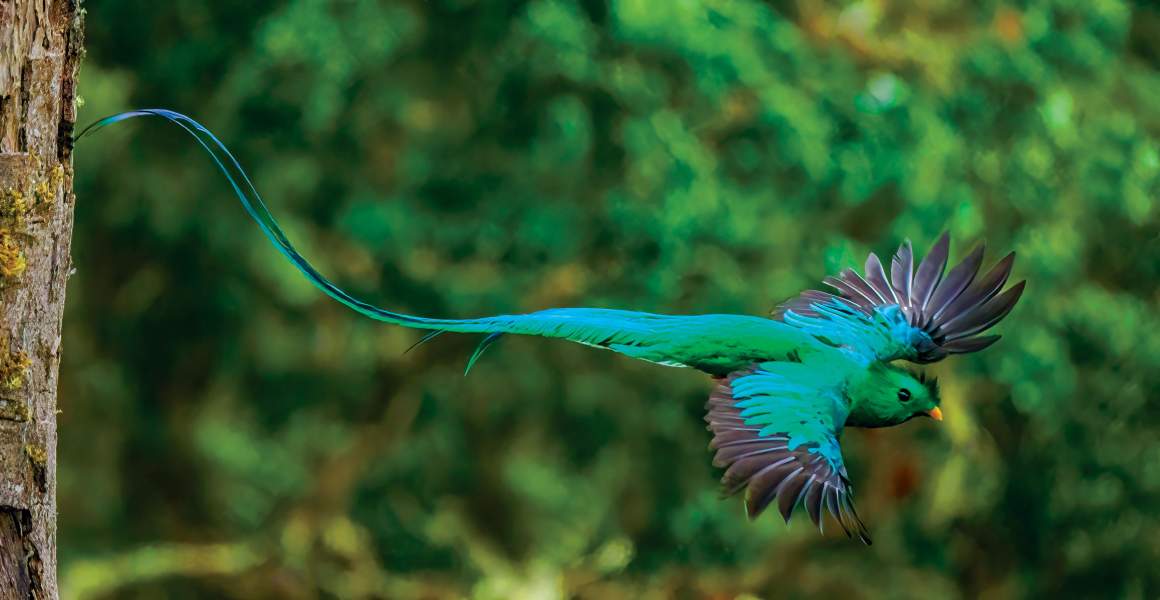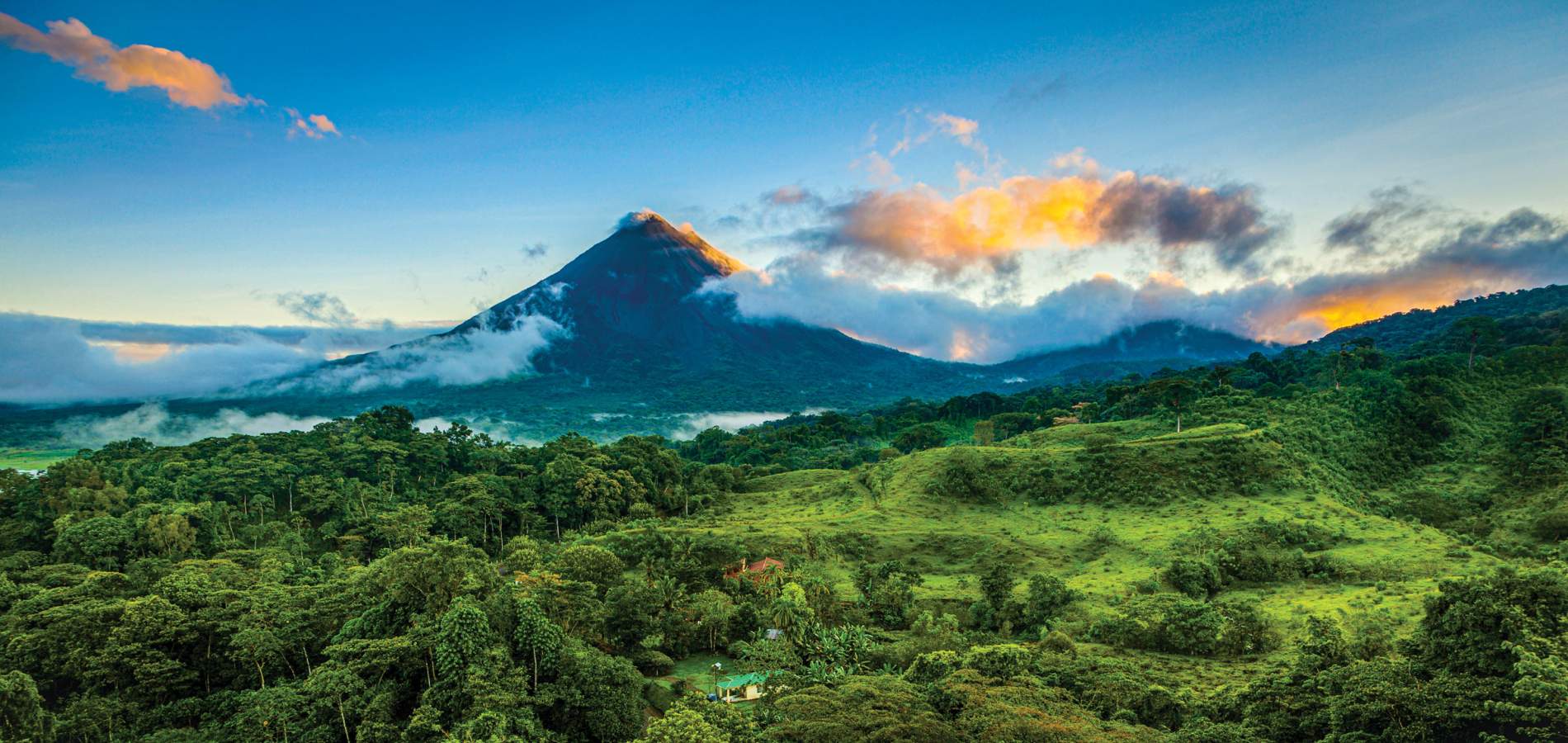There’s something about the small but mighty country of Costa Rica that continues to satisfy both the travellers’ sense of adventure and of serenity.
This is the land of “Pura Vida,” which literally means pure life.
In Costa Rica however, the locals, or ticos/ticas as they call themselves, use it to refer to a simpler way of life. One that, in this immensely biodiverse country, offers rainforests, tropical flora and fauna, volcanoes and beaches along with a sustainable approach.
By Mary Luz Mejia



LOS PARQUES
THE NATIONAL PARKS
Costa Rica holds approximately 5% of the earth’s land-based biodiversity and 3.5% of its marine life. To protect this, the country’s National System of Conservation Areas preserves 25% of the territory. Costa Rica boasts a whopping 28 national parks (three are UNESCO World Heritage sites) covering lush jungles, Pacific and Caribbean beaches and volcanoes, as well as dry and wet tropical rainforests.
According to the Sustainable Goals Index, Costa Rica is 98% deforestation-free and is one of the most sustainable countries in the world. Combined with the preservation of natural resources in protected areas, this means that whether you like to hike, bike or swim, Mother Nature’s bounty is there for you to enjoy throughout the country.

View of San Carlos, La Fortuna Town with Arenal Volcano
ARENAL VOLCANO NATIONAL PARK
NATURE LOVER’S PARADISE
The country’s northern Arenal Volcano National Park is a dual-landscaped marvel featuring 33 square kilometers to explore. One side is green and lush, and home to a variety of wildlife. The other side is a rugged lava field due to the many eruptions that occur daily from the Arenal Volcano, which has been active since 1968. You’ll find lakes, lagoons and the Tabacon Hot Springs surrounded by waterfalls and evergreen forests.
With over 131 mammal species, 135 reptile species and a variety of tropical birds, this is a nature lover’s paradise. Walk along the famed Arenal Hanging Bridges, suspended in the rainforest, and keep your eyes out for white-faced capuchin monkeys, three-toed sloths, jaguars and ocelots. There are also boa constrictors, iguanas, lizards, the famous red-eyed leaf frog, blue jeans poison dart frog and prehistoric gaspar fish. Birdwatchers gather to spot keel-billed toucans, hummingbirds, trogons and fiery-billed aracaris.
Hikers get a two-for-one punch since the park’s protected rainforest and river habitats include another volcano: the inactive Cerro Chato. Various hiking or biking trails are trekkable, ranging from mild to advanced/extreme, many of which meander through forests leading to old lava flows and observation points. If you’re flying into San Juan, you’ll transfer to La Fortuna to start exploring this region.

Toucans deep in the rainforest of Costa Rica.
CARIARI NATIONAL WETLANDS
WATER-BASED BEAUTY
Located in the province of Limon on the northern Caribbean coast, the Cariari National Wetlands were created to protect mangroves and marine areas. Over 2,000 sea-level acres of freshwater rivers and streams join up with sea water, giving the region’s diverse wildlife and marine life a home. Check out the unique trees here, including the colourful Pachira aquatica that grows up to 60 feet tall and blossoms with vermillion-hued, feather-like flowers.
Well-maintained hiking trails take you through the wetlands, while private boat tours begin at the Tortuguero canals, where, if you’re lucky, you might spot the endangered and gentle manatees that swim these waters. Monkeys, sloths, crocodiles and a menagerie of birds (including toucans), all co-exist here in this unique ecosystem.

The famous red-eyed leaf frog.
MONTEVERDE CLOUD FOREST RESERVE
GLAMP AND DINE IN STYLE
The maintenance and expansion of the country’s forests is key to the National Decarbonization Plan launched in early 2019. The goal: to achieve net zero emissions by 2050 so that the country produces no more emissions than it can offset through its healthy forests. Monteverde Cloud Forest Reserve is called the “green lung” of Costa Rica, where over 350 bird species live, including the vibrant quetzal. Part of the trogon family, males can have bright green feathers with a bright red breast and white tail feathers. These birds are considered the bird to see in Central America.
Adrenaline junkies can zipline above the forest canopy or you can take an open-air sky tram for breathtaking views over the cloud forest. For dinner with a side of nature, book one of eight glass boxed, treetop tables, raised 50 feet in the forest at the San Lucas Treetop Dining Experience in Monteverde. You can choose the nine-course, “A Tribute to Costa Rica” menu that offers thirteen tastings of regional dishes made entirely from local, sustainably sourced ingredients. Glamp overnight at Chira Glamping, a small operation owned by a local Monteverde family that offers five geodesic dome-like tents so you can sleep amongst the trees and watch the night sky light up. Take advantage of your own outdoor kitchen, luxury bathroom and glass shower where your view overlooks forest treetops.

Poas Volcano is active and has one of the largest craters in the world.
POAS VOLCANO NATIONAL PARK
A TRANSCENDENT EXPERIENCE
From San Jose, it is a short drive to this national park. A paved road goes to the edge of the Poas Volcano crater, which is one of the largest active craters in the world. On the way to the park, stop at one of the country’s most beautiful waterfalls: the La Paz waterfall. Surrounded by a tropical rainforest, the falls, rivers, butterflies and flora make for a Garden of Eden-like experience. On the way back to San Jose, make sure you visit the Doka Coffee Estate for a tour of their plantation and learn about the ancient techniques used today to produce some of the country’s best beans. Fun fact: banana, lime and lemon trees are planted among the coffee plants to increase soil nitrogen naturally, and workers use pheromone traps as a sustainable way to kill off coffee plant pests and avoid any direct insecticide on the plants!
Whether you enjoy a farm-fresh meal in Monteverde, a sustainable cup of coffee at the estate, or a wildlife-filled hike in a protected park, you’ll leave Costa Rica all the richer for having dipped a toe in their Pura Vida. ✈
Your private jet dream is within reach.
